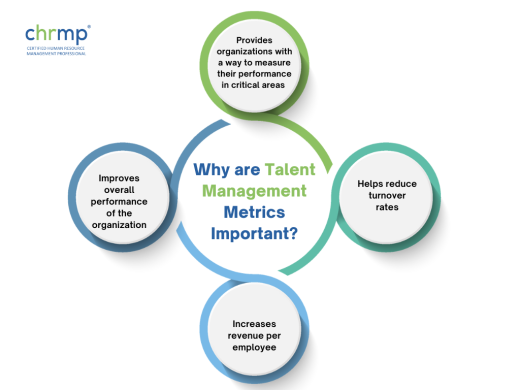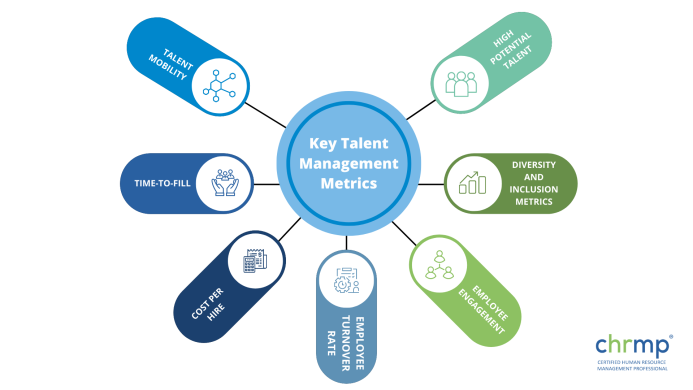

As the industrial landscape continues to evolve along with rapidly increasing competition, organisations must invest in employee development and provide employees with the required tools and resources to grow and develop.
A great way to do so is by keeping track using key metrics that give you a clear view of how your organisation is developing its workforce.
Following the right talent management metrics will help HR professionals identify areas of improvement and customise talent development strategies to better fit the company’s specific needs.
So, whether you want to enhance your team’s productivity or ensure that your employees are not developing into a group of couch potatoes, this blog is for you.
So without further ado, let’s get started!
Talent management metrics are a set of quantitative measures used to evaluate the effectiveness of an organisation’s talent management strategies and programs. These metrics track vital areas such as recruitment, training and development, performance management, employee engagement, and retention.

Some standard talent management metrics include time-to-fill, which measures how long it takes to fill an open position, and employee turnover rate, which measures the rate at which employees leave the organisation.
Other commonly used talent management metrics include cost per hire, which measures the costs incurred in recruiting and hiring a new employee, and employee engagement.
These metrics can provide HR professionals valuable insights into the effectiveness of their company’s talent management strategies and help identify areas of improvement. Organisations can make enhanced, data-driven decisions to attract, retain, and develop top talent by keeping track and analysing these metrics.
Talent management metrics are essential because they provide organizations with a way to evaluate the effectiveness of their talent management strategies and programs. By tracking and analyzing these metrics, organizations can make data-driven decisions to attract, retain, and develop top talent.
According to a survey by Deloitte, 84% of organizations believe that talent management is critical to their success, yet only 22% feel that they are effective at it. Metrics can help bridge this gap by providing organizations with a way to measure their performance in critical areas such as recruitment, training and development, performance management, employee engagement, and retention.

In another report by Aon Hewitt, companies with a strong emphasis on talent management had a 2.3 times higher revenue per employee than those without such a focus.
In a survey by McKinsey, companies with diverse executive teams were 33% more likely to outperform their peers on profitability. This highlights the importance of measuring and improving diversity and inclusion in the organization.
In conclusion, Talent Management Metrics are essential in that they provide organizations with the ability to measure their performance in critical areas such as recruitment, training and development, performance management, employee engagement, retention and diversity and inclusion, thus making data-driven decisions and improving their overall performance, reducing turnover and increasing revenue per employee.

Measuring talent can be complex, as it involves assessing various skills and characteristics. Here are a few ways to measure talent:
Performance evaluations involve assessing an individual’s job performance based on specific criteria and standards. This can include job knowledge, quality of work, productivity, and teamwork.
Skills assessments measure an individual’s abilities in specific areas, such as technical, problem-solving, and communication skills. These assessments can be done through tests, interviews, or simulations.
Behavioural assessments involve assessing an individual’s behaviour and attitudes in the workplace. These assessments include personality tests, situational judgment tests, or 360-degree evaluations.
Potential assessments involve assessing an individual’s potential for growth and development in the organization. This can include assessing leadership potential, learning agility, and adaptability.
Succession planning metrics involve identifying and assessing employees ready to take on leadership roles in the organization and creating a pipeline of future leaders.
To measure talent in diversity and inclusion, organizations can assess the representation of different groups in terms of gender, race, ethnicity, etc., and also measure the effectiveness of their initiatives to promote diversity and inclusion.
It’s important to note that no single method is perfect and that combining forms may be necessary to get a comprehensive picture of an individual’s talents. Additionally, it’s essential to regularly review and update the methods used to measure skill to ensure that they are still relevant and practical.
There are several ways to use talent management metrics to improve an organization’s talent management strategies and programs. Here are a few:
By tracking talent management metrics, organizations can identify areas that need improvement, such as high employee turnover or low employee engagement. This information can then be used to develop and implement strategies to address these issues.
Talent management metrics can be used to evaluate the effectiveness of existing talent management strategies. For example, if the time-to-fill metric is high, it may indicate that the recruitment process needs to be streamlined.

Talent management metrics can benchmark an organization’s performance against industry standards and best practices. This can help organizations understand where they stand with their peers and identify areas where they need to improve.
Tracking talent management metrics over time allows organisations to see how their performance is changing and identify trends. This can help organizations identify patterns and make data-driven decisions.
Talent management metrics can be used to communicate with stakeholders, such as employees, managers, and senior leaders, about the organization’s performance in critical areas of talent management. This can help build buy-in and support for talent management initiatives.
Talent management metrics can be used to create accountability for talent management initiatives. Organizations can hold managers and leaders accountable for achieving specific goals and targets by tracking and reporting on metrics.
In summary, organizations can use talent management metrics to identify areas of improvement, measure the effectiveness of their talent management strategies, benchmark their performance, track progress over time, communicate with stakeholders and create accountability.
Regarding talent management, organizations need to track key metrics that can give them a clear picture of how their workforce is performing.
Here are five talent management metrics that every organization should be using:

Let’s take a closer look at each of them:
Measures the amount of time it takes to fill an open position. This metric helps organisations understand how long it takes to attract and hire the right candidate and can help identify areas where the recruitment process can be improved.
Measures the cost of recruiting and hiring a new employee. This metric helps organisations understand the financial impact of their recruitment efforts and can help identify areas where costs can be reduced.
Measures the rate at which employees leave the organisation. This metric helps organisations understand why employees are going and identify areas that need improvement to reduce turnover.
Measures employee engagement and satisfaction with their job and the organization. This metric helps organizations understand how engaged and satisfied employees are with their jobs and the organization and can help identify areas that need improvement.
The representation of different groups in terms of gender, race, ethnicity, etc., in the organisation. This metric can help organisations understand the diversity in their workforce and identify areas that need improvement to promote diversity and inclusion.
Talent indicates staff mobility which can be both, internal as well as external. In this strategy, organisations move existing employees to new positions or departments that open up within the company instead of hiring new candidates.
Talent mobility is a great way to assess versatility as well.
High potential talent refers to an employee that possesses the capabilities, motivation and commitment to be promoted to and succeed in top positions of the company.
It is important for managers to know the percentage of employees who can be considered as high potential talent. Some organisations add limitations to the size of their talent pool which allows them to select only the most talented employees for higher positions.
Talent management and performance management are both key functions of human resource management, and though closely related, are quite different terms.
Talent management encompasses a broader area of managing employees and involves the entire cycle of an employee within the company. This includes training, onboarding, promotions, etc. Talent management involves managers recruiting, developing and rewarding employees.
On the other hand, performance management is more of a niche area that comes under talent management. It operates only on a single level, and involves assessing and measuring the performance of individual employees by their managers.
In conclusion, talent development metrics is a vital tool for HR professionals in measuring the effectiveness of their talent management strategies.
By tracking metrics such as time-to-fill, cost-per-hire, employee turnover rate, employee engagement, retention rate, diversity and inclusion metrics, succession planning metrics and performance and productivity metrics, HR professionals can make data-driven decisions that can help improve the overall performance of their organisation.
Talent management metrics can be used to identify areas of improvement, measure the effectiveness of talent management strategies, benchmark performance, track progress over time, communicate with stakeholders, and create accountability.
By staying on top of these key talent development metrics, HR professionals can ensure that their organisation is well-positioned to attract, retain, and develop top talent.
Q: What data is collected in talent management?
A: In talent management, data is collected on various aspects such as recruitment, training and development, performance management, employee engagement, and retention. This can include time-to-fill, cost-per-hire, employee turnover rate, training and development expenses, employee engagement and retention rate, diversity and inclusion metrics, and succession planning metrics.
Q: What are the best talent management strategies?
A: The best talent management strategies can vary depending on the organisation’s specific needs. However, some standard techniques include: creating a strong employer brand, implementing effective recruitment and retention strategies, investing in employee development and training, creating a positive work culture, and promoting diversity and inclusion.
Q: Why does an organisation need talent management?
A: Organisations need talent management to attract, retain, and develop top talent. Effective talent management helps to ensure that an organisation has the right people in the right roles, with the skills and abilities necessary to achieve its goals. Additionally, talent management can help improve employee engagement, reduce turnover, and increase revenue per employee.
Q: What is the difference between talent management and talent development?
A: Talent management is identifying, attracting, developing, and retaining talented individuals in an organisation. It includes recruitment, training, performance management, and succession planning.
On the other hand, talent development provides employees with the skills, knowledge, and experiences they need to grow and advance in their careers. It includes activities such as training, mentoring, and coaching.

Grab Your 25 Free Email Templates Now